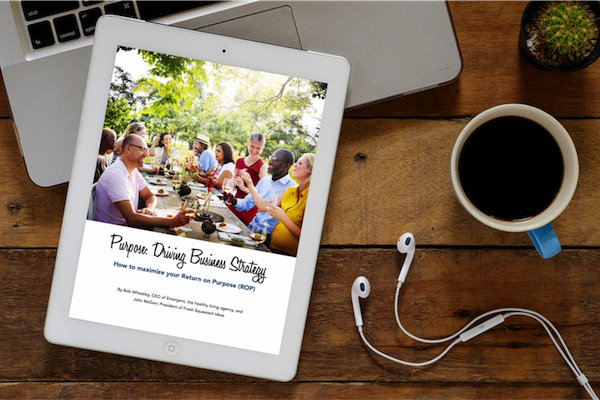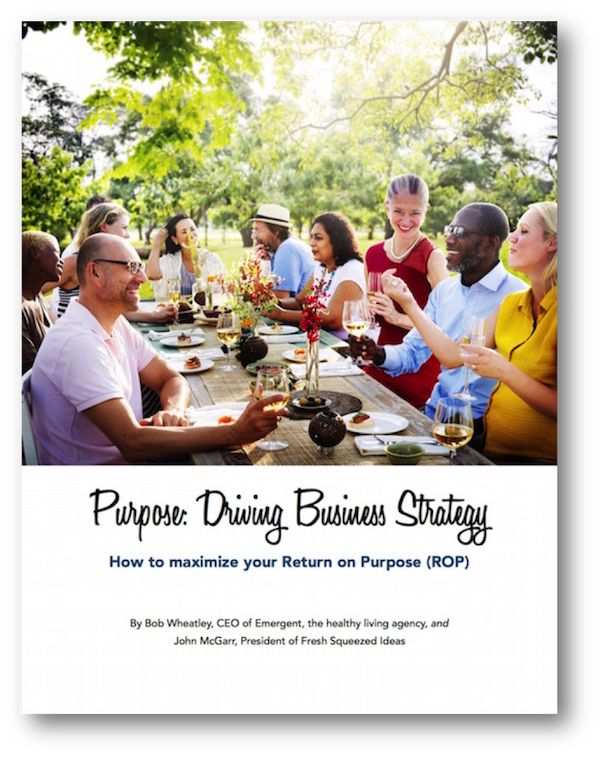
Mapping the Intersection of Psychology and Brand Communication
June 6th, 2022 Posted by Emergent Behavioral psychology, brand advocacy, brand marketing, brand messaging, Brand preference, Brand trust, engagement, Social proof, storytelling 0 comments on “Mapping the Intersection of Psychology and Brand Communication”Don’t overlook the human in front of you…
We’re going to peel the onion on how people think and operate. We’ll show you how this impacts optimizing brand communications strategy to vastly improve engagement and results from your investments in consumer and stakeholder outreach.
But first, the state of the state
It seems inevitable, like a law of physics gone bad, that the majority of CPG and retail marketing is inwardly focused on the brand or product specifics. Communication strategies spin around self-promotion, and a belief that brands must “prove” their value with analytical arguments. As such, marketers are fixated on what has been invented, added or stirred in to the product to “deserve” the purchase or shop. This approach is founded on a view that the hard evidence, pushed even harder at the audience, makes the product or retailer more desirable.
But this is a mistake. Like lies by omission, this approach glosses over the profound truths we know about how people think and behave. Doesn’t it make more sense to design brand communication that resolves the inherent barriers to change people raise, rather than pushing proof points to an audience that begins each day with risk aversion sewn into their DNA?
Neophobia is everywhere
“Fear of anything new” lives in varying degrees with most people. We are, after all, creatures of habit for the very reason people abhor the discomfort of perceived risk in making bad decisions. Staying the course with the tried-and-true takes burning any mental calories out of the equation through default to the familiar.
However, for any brand or business, launching new products, services, ideas are fundamental to generating incremental growth. With resistance baked into human behavior change, it only makes sense to work backwards from how people think to acknowledge the human in front of us in our story.
The driving force behind decisions is…
People are on a constant scan of their surroundings for information that affirms their own point of view. We call this confirmation bias. People see what they expect to see and conclude what they expect to conclude. Try asking a Coke drinker to switch to Pepsi – not likely and a sampling will simply confirm their bias about taste expectations. The importance of insight research to better understand what people already believe can’t be overstated. Confirmation bias is foundational to the human condition and needs to be weighed on the path to optimal strategy.
How do marketers answer risk and bias?
Changing minds and hearts is an invitation to trust creation. Important to note here that trust is a feeling and not a rational experience. It emerges when we sense the brand is driven by values and beliefs, similar to our own, that transcend self-gain. This is the essence of our longing for reciprocity, honesty and integrity – qualities people resonate to and respect.
Specific considerations from human behavior insight come to play in the strategic plan.
Narrow your targeted consumer cohorts to those whose beliefs are closer to the desired opinion or viewpoint you are trying to secure. There is a temptation especially at a launch to go wide and attempt to appeal to everyone. That is a riskier approach. Better to identify the audience closest to your proposition, those most likely to embrace your offer because it is seen as a pain killer. A pain killer is a product your refined audience needs to have now, right now, rather than a nice to have maybe someday.
But what about those consumers who are further afield and more difficult to draw in? Here are three principles to consider when you have a steeper hill to climb.
- Shorten/reduce the ask – how can you create a stepping-stone approach of a slower, steady path to change that comes at people in chunks and stages. Meatless Monday is a great example of modifying the ask. You don’t need to convert to a plant-based diet entirely, just one day a week opens the door to trial and experience without trying to force wholesale lifestyle change.
- Switching the field – look for places where like-mindedness already exists, where your brand values and beliefs align. This “unsticking point” can help move your audience closer to you by riding the wave of shared view and aspiration. People are more comfortable with what is familiar to them.
- Adoption psychology – how easy and frictionless can you make trial? How can you reduce the costs of trial? How do you remove any sense of risk in taking a bite-size swing at what’s on offer? Ease of returns maybe. Years ago, Zappos as an early player in e-commerce created free shipping and free returns as a path to making shoe purchases acceptable and desirable when customers couldn’t try a pair before buying. Now we take that free ship offer for granted, but in its day, that big move raised business results literally overnight.
Here are rules to observe in risk reduction:
Rule of Similarity
We will believe “people like me” before accepting the assertions and claims made by brands. The opportunities for engagement increase substantially when people are in communities of like-minded souls who share the same needs and concerns.
Curate your social channels to identify audiences most likely to resonate and share similar points of view with each other. This narrowcasting approach is more powerful than ‘all things to all people’.
Rule of Validation
The more risky the ask, the more verification will be required. The use of multiple outside third party, credible voices can help make your communication convincing and validating. We did this for a financial services company whose primary customers were banks – a conservative, risk averse audience if there ever was one. We created a video covering key issues of concern on the path to acceptance. We did this through candid, unscripted interviews with 10 existing banker customers from varying markets and business models. These executives affirmed through their own experiences what we wanted potential bank prospects to believe. The sheer number of voices, the similarity of backgrounds and values, the humanization and unscripted tone made the entire communication more credible, powerful. The outcome was astounding to quicky step bank decision makers beyond perceived risk and resistance.
Rule of Concentration
We often get asked, which is better – a heavy-up concentration of media activity over a smaller geographic area vs. a broader but lighter outreach over a larger distribution territory? The answer is concentration is always best to help confront the desired audience with multiple messages from multiple sources. This generates a bandwagon effect that suggests to the audience, “wow, this might be important” and thus worthy of further investigation. It may take longer to address a larger geographic launch this way, but it will also be more effective.
We often convey to clients that Emergent is in the brand storytelling business. That’s certainly true. But if we step back and look at the integration of strategy to story and what we know about behavior, it might be more accurate to say we’re in the risk removal business.
We utilize our knowledge of psychology and neuroscience to help create interest, change and trial by getting past the elaborate risk barriers every human manifests. We reduce risk by mining our client brands’ higher purpose and values alignment (trust) — while delivering credible evidence and authoritative guidance that gives consumers permission to buy.
If you would like to talk in greater detail about how risk aversion impacts your business, use this link to start an informal get-acquainted conversation.
Looking for more food for thought? Subscribe to the Emerging Trends Report.
Bob Wheatley is the CEO of Chicago-based Emergent, The Healthy Living Agency. Traditional brand marketing often sidesteps more human qualities that can help consumers form an emotional bond. Yet brands yearn for authentic engagement, trust and a lasting relationship with their customers. Emergent helps brands erase ineffective self-promotion and replace it with clarity, honesty and deeper meaning in their customer relationships and communication. For more information, contact [email protected] and follow on Twitter @BobWheatley.


